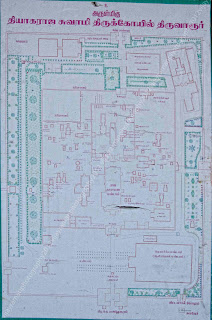It is an hour's drive from Sri Vanjiyam to Thiruvarur.
How many times had I planned to visit this place, and how many times had the plans been dropped?
I remember Sri Aurobindo's words. You don't chose the divine, the divine chooses you.
Not a rough ride along the state highway. The ground was wet with recent rains, and the morning sun was pleasant.
Thiruvarur boasts of three big names: Saint Tyagaraja, Shama Shastrigal and Muthuswami Dikshitar.
The town reverberates with a spiritual flavour. Clean roads, huge temple tower and a beautiful temple tank.
Unless you have a guide, you get lost in the temple. You don't know where to begin and which sanctum to visit first.

However, the temple you should not miss is Roudra Durgai and Rina Vimosanar.
Somewhere in the astral worlds, the gods operate, and there are junction points in this world where the deities come and help you.
The temples of Roudra Durgai and Rina Vimoasar are good examples.
It is said that the mind and body are freed of anxieties and apprehensions when these temples are visited.
By the time we came out, it was an hour past lunch. We had to wait for another half an hour before we could settle for a good South Indian meal.
We were on the road again. Our next destination: Thirukollikadu – Pongu Saneeswaran Temple.















































